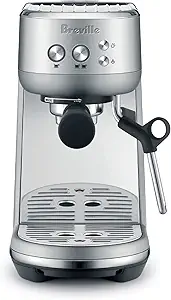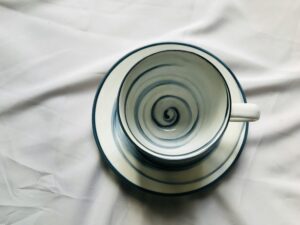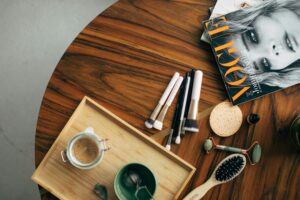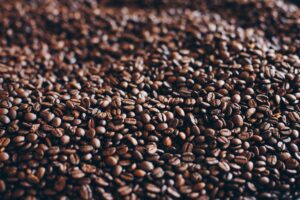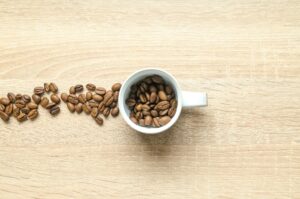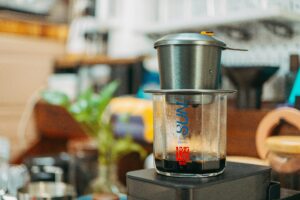There’s nothing quite like that first sip of barista-made coffee. The balance of flavor, the rich aroma, and the creamy texture—it feels indulgent. But what if you could recreate that café experience in your own kitchen? With the right techniques, tools, and beans, brewing barista-quality coffee at home is entirely achievable.
Table of Contents
Whether you’re a beginner or a budding coffee connoisseur, this guide walks you through everything you need to know to make top-tier coffee without leaving your house.
Why Home Brewing Is Worth the Effort
Coffee isn’t just a beverage—it’s a ritual. Learning how to brew great coffee at home means more than saving money on daily café visits. It gives you control over every element of the process, allowing you to tailor your cup exactly to your taste.
From grind size to water temperature, the variables that affect your brew are often overlooked. Once you master them, your homemade coffee can rival that of your favorite coffee shop.
Step 1: Start With Quality Coffee Beans
The foundation of excellent coffee is, unsurprisingly, the coffee itself. You can’t expect amazing results with subpar beans. In 2025, specialty coffee is more accessible than ever, with plenty of roasters offering fresh, ethically sourced options.
Choose Fresh, Whole Beans
Freshness is key. Coffee beans begin to lose flavor within two weeks of roasting, so always buy whole beans and grind them just before brewing. Look for beans with a roast date rather than an expiration date.
Select the Right Roast for Your Taste
Light roasts highlight fruity, floral notes and are great for pour-overs and drip methods. Medium roasts strike a balance between flavor and body, while dark roasts offer bold, rich profiles ideal for espresso and French press.
Step 2: Use the Right Equipment
You don’t need a full-scale espresso bar to make great coffee, but a few tools can elevate your brewing game significantly.
Invest in a Burr Grinder
A burr grinder provides a consistent grind size, which is essential for balanced extraction. Blade grinders chop beans unevenly, resulting in bitter or sour notes. Burr grinders come in manual and electric versions and are well worth the investment.
Choose Your Brewing Method
Each brewing method produces a unique flavor profile. Here are some popular home-brewing options:
Pour-Over (e.g., Hario V60, Chemex)
Offers a clean, bright cup with a lot of clarity. Great for light and medium roasts.
French Press
Rich and full-bodied with heavier mouthfeel. Ideal for medium to dark roasts.
Espresso Machine
Delivers intense, concentrated coffee. A bit more technical but rewarding for espresso fans.
AeroPress
Versatile and portable. Can make both espresso-style and regular coffee.
Drip Coffee Maker
Convenient and consistent. Modern versions with temperature and bloom control can rival manual brews.
Breville Bambino Espresso Machine BES450BSS, Brushed Stainless Steel
Espresso Machine with precise extraction: Digital temperature control (PID) delivers water at precisely the right temperature ensuring optimal Espresso extraction
Step 3: Use Filtered Water and the Right Ratio
Coffee is over 98% water, so the quality of your water plays a huge role. Use filtered water to avoid unpleasant flavors caused by minerals or chlorine.
Master the Coffee-to-Water Ratio
A good starting point is the “Golden Ratio”: 1:16, which means one gram of coffee for every 16 grams (or milliliters) of water. For example, 20 grams of coffee to 320 ml of water. Adjust slightly depending on your taste preferences.
Measure With a Scale
Eyeballing measurements often leads to inconsistent brews. Use a digital scale to weigh both coffee and water for precise, repeatable results.
Step 4: Control Your Water Temperature
Water that’s too hot can over-extract the coffee, making it bitter. Too cool, and the coffee is under-extracted, tasting sour or weak.
Ideal Temperature Range
Aim for a water temperature between 195°F and 205°F (90–96°C). If you’re boiling water, let it sit for 30 seconds before pouring if you don’t have a temperature-controlled kettle.
Use a Gooseneck Kettle for Pour-Overs
This type of kettle gives you greater control over the pour rate and direction, which is crucial for even extraction in pour-over methods.
Step 5: Mind the Grind Size
Grind size directly affects how your coffee brews. Using the wrong grind for your brewing method will lead to under- or over-extracted coffee.
Basic Grind Guide by Brewing Method
- Espresso: Very fine
- AeroPress: Fine to medium (depending on recipe)
- Pour-over: Medium-fine
- Drip machine: Medium
- French press: Coarse
Grind too fine, and water flows too slowly, resulting in bitterness. Grind too coarse, and it flows too fast, leading to a weak brew.
Step 6: Perfect Your Brewing Technique
Every brewing method has its nuances, but here are some general tips that apply across the board.
Pre-Wet the Filter
If using paper filters, rinse them with hot water first. This removes any paper taste and preheats your brewer.
Bloom Your Coffee
The “bloom” is the release of carbon dioxide from freshly ground coffee. Pour a small amount of hot water over the grounds and let it sit for 30–45 seconds. This step improves extraction and flavor clarity.
Pour Slowly and Evenly
Especially for pour-overs, a slow, circular pour ensures even saturation. Avoid pouring all at once or in one spot.
Stir or Swirl
Gently stirring or swirling the brew after pouring can help mix the grounds and water, leading to a more balanced cup.
Step 7: Taste and Adjust
Coffee brewing is part science, part art. Taste your coffee and make small adjustments to improve it.
- Too bitter? Try a coarser grind or lower brew temperature.
- Too sour? Try a finer grind or slightly more brew time.
- Too weak? Use more coffee or a finer grind.
Keep a coffee journal to track your variables and find your perfect brew.
Bonus Tips for a Café-Style Experience
Warm Your Mug
A cold mug can cool your coffee too quickly. Preheat your cup with hot water before pouring in your coffee.
Use Fresh Milk or Froth It
For milk-based drinks, use fresh, cold milk and froth it using a steam wand, milk frother, or even a French press. The texture elevates your latte or cappuccino.
Add Latte Art (Optional)
If you’re using an espresso machine and steamed milk, you can try your hand at simple latte art. Start with a heart or tulip design and build from there.
Create a Coffee Station
Designate a small area in your kitchen for your coffee gear. Keeping everything organized makes the process smoother and more enjoyable.
Common Mistakes to Avoid
Stale Beans
Always buy fresh, whole beans and store them in an airtight container away from heat and light.
Using Tap Water
Unfiltered tap water can ruin even the best beans. Stick to filtered or bottled water for the best taste.
Rushing the Process
Barista-level coffee takes time. Don’t skip steps like blooming or measuring—those small details make a big difference.
Final Thoughts
Brewing barista-quality coffee at home is more than a trend—it’s a lifestyle. With the right beans, tools, and techniques, your kitchen can become your favorite coffee shop. Whether you’re using a French press, an espresso machine, or a humble pour-over, every step brings you closer to your perfect cup.
Invest in your setup, experiment with your process, and most importantly—enjoy the journey. Because great coffee isn’t just about the result—it’s about the ritual.

